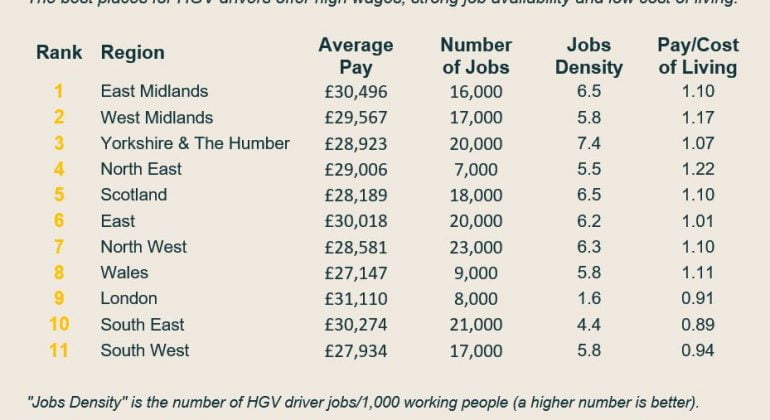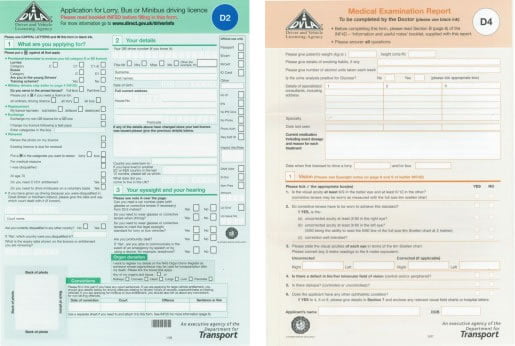If you want to take HGV Class 1 training, now is the best time to do so. The shortage of drivers with HGV training has received a lot of media attention in recent months, although the problem has been around for some time. COVID-19 and Brexit have aggravated a current retention concern. We analyse the reasons for the scarcity and examine several potential alternatives.
The reason for a shortage of heavy goods vehicle drivers
The Association of Road Haulage report has claimed a lack of around 100,000 truck drivers (though current assessments indicate this number to be nearer to 70,000). Brexit and COVID-19 are commonly attributed as the main reasons for the truck driver shortage.
However, the facts are expected to be more complex and nuanced than the news suggests.
The concern involving the lack of workers pre-2020 was not caused by a failure to employ or an ageing workforce. Between the years 2015 and 2019, there were a total of 25,500 new drivers trained every year, which essentially compensated for the 10,000-each-year retirement rate.
Whilst there’s no question that COVID-19 and Brexit have had an impact, retention in the freight transport sector has been an issue for a long time. Most truck drivers leave their profession before they reach the age of 45. Only 19% of individuals under the age of 45 who carried HGV licenses in 2020 were qualified drivers, while just 32% kept their qualifications and licences.
Many others abandoned their profession. A substantial number of those above the age of 45 leave the labour force before retiring; 40,000 over-45s did so in the initial months of 2021.
From 2020, the stream of new workers could be sustained and met national demand, letting companies continue with low-paid labour and less favourable conditions of employment for truckers. For over 15 years, HGV trucker salaries have stagnated. Many drivers work extended and unpleasant hours – the reduced balance of work and life was frequently given as a cause for quitting. The latest driver scarcity seems to be due to a long-term inability to keep HGV drivers. The epidemic as well as Brexit have worsened the problem, causing it to be more apparent, which has generated media attention and government responses.
Is there a Solution?

Evidently, no one-size-fits-all solution applies to this concern. A variety of short- and long-term changes are needed. Here are some solutions that have been proposed or implemented to encourage more people to undergo HGV training and work in the truck industry:
Presenting Visas
To provide a short-term answer, the Government created visas available for HGV operators of food and fuel products. These visas, though, were only accessible to 5,000 individuals. This fails to account for the 12,500 citizens of the EU who have departed their jobs since 2020 and the 52,500 drivers in Britain who don’t want to work anymore.
Furthermore, even if more drivers qualified for the visa because there are shortages of HGV drivers throughout central Europe (although to a reduced amount than in the United Kingdom), a work visa for short-term use in the United Kingdom may not be enough to entice them. Nevertheless, this might be a temporary solution while new workers are taught or as payments are increased to encourage those who have changed occupations.
Using the Military
Although it is anticipated that military personnel will be used as drivers for a short period, this is not considered to be a lifelong answer.
Better Wages
Several experts suggest that the industry corrects itself in an open market. Contracting or employing HGV drivers to reach the growing needs for drivers would result in raised wages (particularly beyond normal working hours), enhanced working conditions and shifts, and would require improved facilities to satisfy the swelling demand for drivers.
Several businesses have already boosted their pay (some by as much as 40%), but employment has been slowed owing to a lack of work and life balance – it appears that more comprehensive adjustments are needed.
IR35
The variations to IR35 prompted many heavy truck drivers to exit the business, especially the contingent labour market. The self-employed status, as well as the reduced tax liability, had appealed to drivers.
Many contingent drivers’ assignments were deemed to be within IR35, forcing them to use a PAYE system, lose their status, or retain their self-employed rank but lose their tax benefit.
This resulted in most drivers leaving the sector and seeking employment in other industries. Those employment firms that have recognised this problem and assessed in what way they can remain self-employed beyond IR35 have had some success in improving the total of drivers on their accounts.
Lower Costs of Training
Another approach to address the shortage is to lessen or subsidise training costs. Training to become a driver requires thousands of pounds today, which might deter potential applicants. A plan was announced that provides 5,000 spots for training lessons, local funding and new “skills bootcamps”. Although this may assist with the current scarcity, the chronic problem in the industry has always been retention rather than finding fresh drivers.
To reduce the difficulty of obtaining HGV Class 1 training and a licence, some experts recommend that the Government must forever subsidise training expenditures and partner with insurance companies to give better insurance coverage for unprofessional drivers.
Adjusted Working Hours
Most HGV drivers have requested that firms give more favourable working hours, shift patterns, including breaks, to allow them to better balance work and life. Where firms can’t do so, the administration may change the Tachograph Hours and Working Time Directive rules to provide drivers with more frequent or longer rests and confine everyday driving hours.
Other permanent solutions include greater investments in roadside amenities, improved parking (with overnight parking), enhanced service stations as well as ‘truck stops’ together with other services.
For the economy of the UK to be based on the transportation industry, significant change will be required to focus on these problems. As of now, no simple solution is being offered; instead, organisations and employers at all levels will need to come up with their own solutions by combining several of the ideas mentioned above.
If you have any questions or would like to learn more about the shortage of HGV drivers or if you are asking yourself, “how can I find quality HGV training near me”, please speak to a representative from the Immigration or Employment department.
Finding the right company that provides complete HGV training courses and offers jobs with benefits and work/life balance can be difficult. This is where HGV Training Network can assist. We help you become a skilled HGV driver, allowing you to land the best position. Please browse our website at hgvtrainingnetwork.com or call us on 02038699001 today!
























